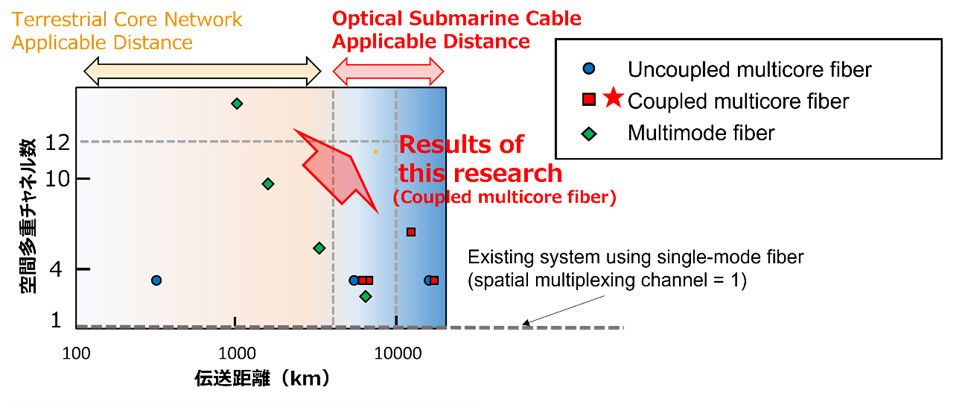3 月 26 日消息,日本电信运营商 NTT 近日携手 NEC 发布联合公告,宣布近期成功完成“首次跨洋 7280 千米传输实验”中,将光网络带宽提高 12 倍。

该技术耦合了外径为 0.125 毫米的标准光纤,组成 12 条光信号传输路径,为“下一代传输基础设施技术”铺平道路。
海底光缆目前主要使用单芯光纤(single-core fiber),每根光纤内只有 1 个纤芯(core,光传输路径)。
而两家公司最新研究的突破点在于可以不增加光缆直径的情况下增加更多的纤芯,通过增加纤芯来提高光通信的网络容量。
两家公司在报告中也坦言目前这项实验技术存在一系列问题,主要是容易受到串扰降低数据质量。两家公司表示由于光信号之间的延迟和损耗不均匀,很难在远距离准确接收信号。

值得庆幸的是,研究人员认为,利用电信业广泛采用的 MIMO(多输入多输出)技术来分离干扰无线电信号,可以解决这个问题。
虽然 MIMO 目前只在无线通信领域得到商业应用,但 NTT 和 NEC 表示,他们已经开发出有助于改善光网络的新技术。

以上图源:NTT 新闻稿
虽然这项新技术在 4523 英里测试网络的受控条件下似乎发挥了作用,但它在现实世界中是否有用仍有待观察。
NTT 和 NEC 认为,新技术可以在 2030 年代部署,可能会极大地促进跨洲海底通信,以应对未来十年数据消费的预期增长。










